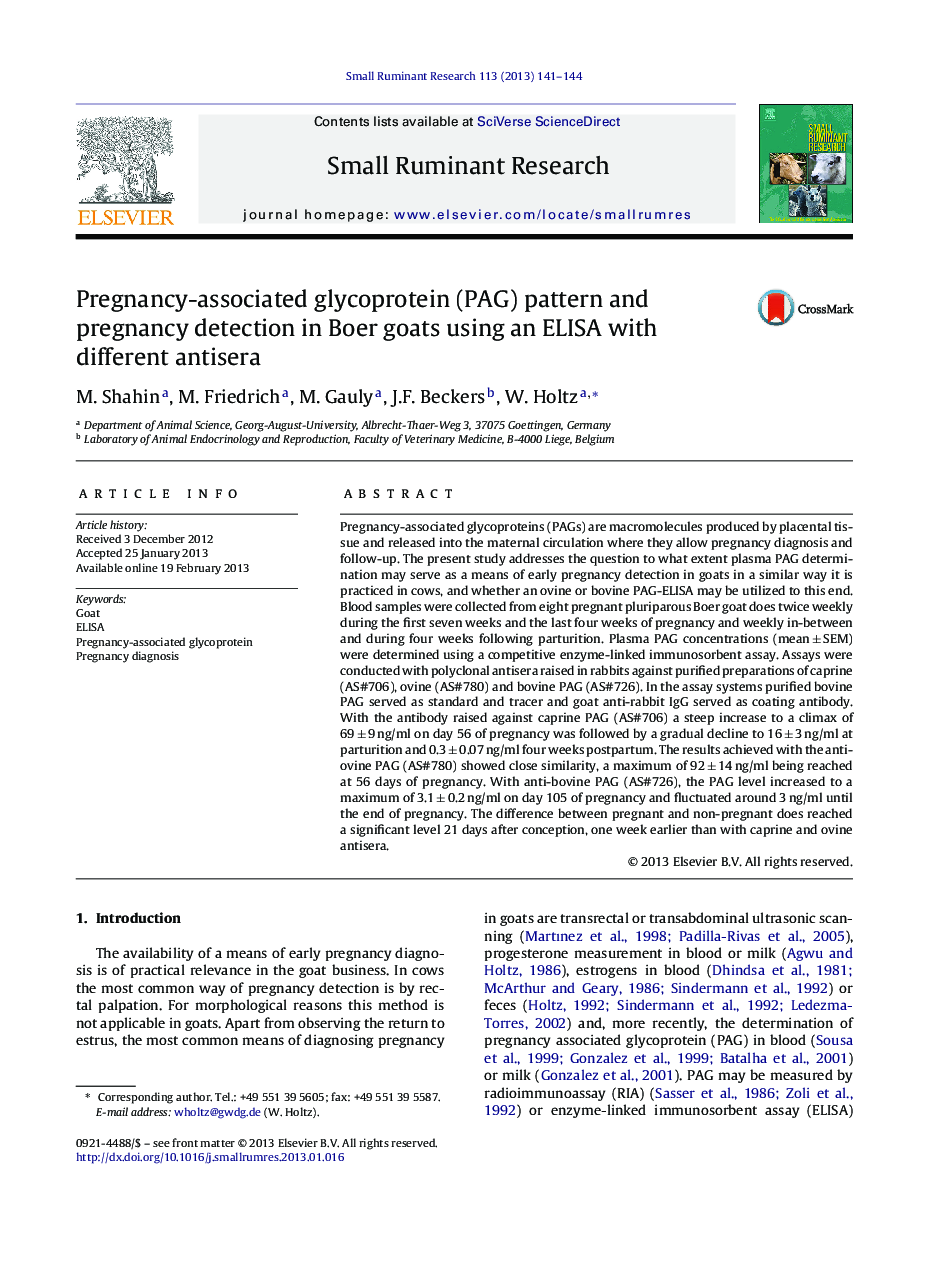| Article ID | Journal | Published Year | Pages | File Type |
|---|---|---|---|---|
| 5795947 | Small Ruminant Research | 2013 | 4 Pages |
Pregnancy-associated glycoproteins (PAGs) are macromolecules produced by placental tissue and released into the maternal circulation where they allow pregnancy diagnosis and follow-up. The present study addresses the question to what extent plasma PAG determination may serve as a means of early pregnancy detection in goats in a similar way it is practiced in cows, and whether an ovine or bovine PAG-ELISA may be utilized to this end. Blood samples were collected from eight pregnant pluriparous Boer goat does twice weekly during the first seven weeks and the last four weeks of pregnancy and weekly in-between and during four weeks following parturition. Plasma PAG concentrations (mean ± SEM) were determined using a competitive enzyme-linked immunosorbent assay. Assays were conducted with polyclonal antisera raised in rabbits against purified preparations of caprine (AS#706), ovine (AS#780) and bovine PAG (AS#726). In the assay systems purified bovine PAG served as standard and tracer and goat anti-rabbit IgG served as coating antibody. With the antibody raised against caprine PAG (AS#706) a steep increase to a climax of 69 ± 9 ng/ml on day 56 of pregnancy was followed by a gradual decline to 16 ± 3 ng/ml at parturition and 0.3 ± 0.07 ng/ml four weeks postpartum. The results achieved with the anti-ovine PAG (AS#780) showed close similarity, a maximum of 92 ± 14 ng/ml being reached at 56 days of pregnancy. With anti-bovine PAG (AS#726), the PAG level increased to a maximum of 3.1 ± 0.2 ng/ml on day 105 of pregnancy and fluctuated around 3 ng/ml until the end of pregnancy. The difference between pregnant and non-pregnant does reached a significant level 21 days after conception, one week earlier than with caprine and ovine antisera.
